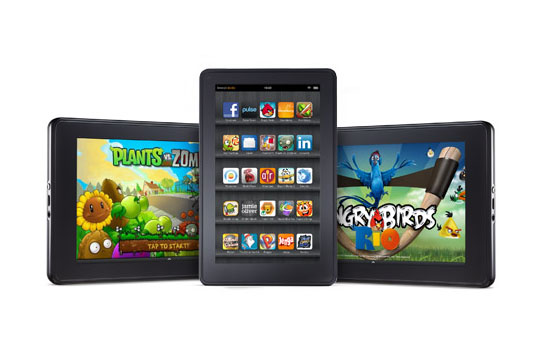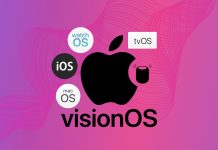
Before you say anything else, you gotta admit: The Kindle Fire is a cool-looking tablet.
Amazon is entering the tablet game with a product called the Kindle Fire. It’s a 7-inch Android-powered tablet with 8 GB internal storage, a USB connector and Wi-Fi connectivity. Most attractive of all to tablet shoppers will likely be the price: $199. On the one hand, awesome. On the other, you get what you pay for. More on that in a moment.
Amazon shows off a nice array of features and doohickeys that come standard with the Kindle Fire, and here are some of them:
• 18 million movies, TV shows, songs, magazines, and books
• Amazon Appstore – thousands of popular apps and games
• Ultra-fast web browsing – Amazon Silk
• Free cloud storage for all your Amazon content
• Vibrant color touchscreen with extra-wide viewing angle
• Fast, powerful dual-core processor
• Amazon Prime members enjoy unlimited, instant streaming of over 10,000 popular movies and TV shows
It ships Nov 15, but you can place a pre-order now if you like.
I’ve been doing some reading about this tablet, as iPad competitors interest me greatly. I keep waiting to see if someone will finally make a decent competitor that can actually take a bite out of the iPad’s financial and critical lead (after HTC, RIM, Samsung and HP all failed). Unfortunately, it doesn’t look like the Kindle Fire is going to be that competitor.
It’s too early to tell what you’ll get when you pull a Kindle Fire out of the box, but early reports set off some alarm bells. Ryan at GDGT points out that “The Amazon tablet will look like a PlayBook — because it basically is.” He explains that RIM originally outsourced hardware design for their PlayBook to mega-ODM Quanta (who builds and sometimes helps to design hardware for name brands). When Amazon’s executives decided to make the Kindle Fire an Android tablet, their own Kindle Group — Lab 126—didn’t want to take on the project, favoring work on next-gen E-Ink-based devices. Amazon decided they didn’t need Lab 126’s help and went to Quanta, repurposing the PlayBook technology for their own product. Need I remind you that the PlayBook was one of the biggest tech flops of 2011? It gets worse…
Although Amazon did refresh the ID of their PlayBook derivative, I’m told that this first tablet of theirs is “supposed to be pretty poor” and is a “stopgap” in order to get a tablet out the door for the 2011 holiday season — which doesn’t exactly leave the best taste in my mouth. But it’s also not the most uncommon story, either: when you’re breaking into a new market, sometimes you have to do whatever it takes to get in the game. You may remember how crappy the original Kindle was compared to later models!
The one thing that has characterized every failed tablet in 2011 has been the cutting of corners in order to get the product to market. While the iPad arrived fully functional and working essentially the same way today that it did on day one, other products (such as the Xoom, the PlayBook, the TouchPad) all had serious issues from the start where the device performance was unforgivably bad or basic features that were expected (and promised) didn’t materialize. I can’t think of one non-iPad tablet released in the last 12 months that didn’t require the consumer to cut the manufacturer some slack or where the press team didn’t make excuses for what the product couldn’t do that the iPad had already been doing for a year.
Now, again, we see another player in the tablet market who brings a smaller tablet (you really think these things are 7-inch because they fit in your pocket? Or because they’re trying to use less plastic and glass and, thereby, compete with the iPad on price?), which, out of the gate, is already the “lesser” product that brings with it the promise of “we’ll do a better job later, we promise.” If that formula didn’t yield results for RIM, HP or HTC, why would it suddenly work for Amazon?
As a tech journalist, the biggest surprise I’ve had in the last 18 months has been Apple’s competitors’ inability to create a working, affordable tablet that could at least compete alongside Apple, if not outright best them.
I haven’t yet come to think that it’s impossible, however. Metro is on the way, and it exemplifies the value of taking your time to do something unique… virtues that Apple used to put the iPad on the map in the first place.






